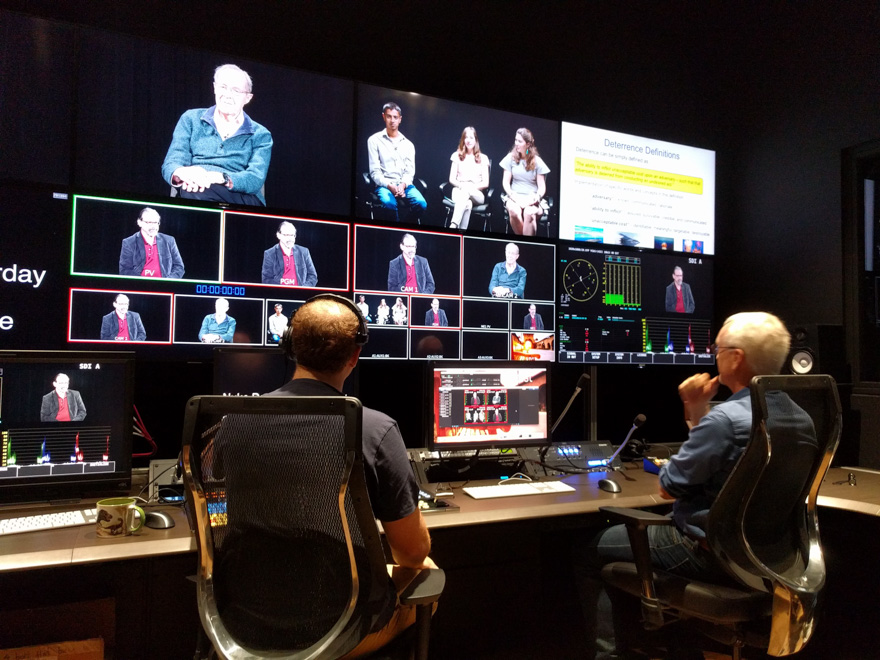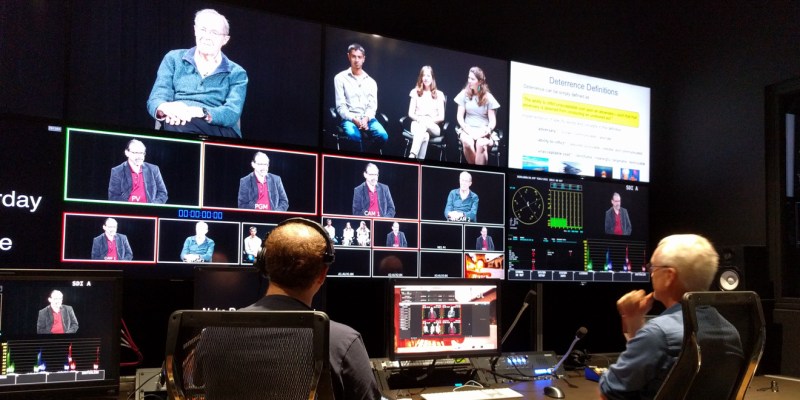On Oct. 17, Stanford Online will release a new massive open online course (MOOC) entitled “The Threat of Nuclear Terrorism” to educate the public on the dangers of nuclear weapons. The MOOC is a part of the William J. Perry Project, an initiative founded by William J. Perry, a professor emeritus at Stanford’s Freeman Spogli Institute for International Studies and former U.S. Secretary of Defense.
The new class features 12 course staff ranging from former Los Alamos physicists to former career covert CIA operations officers. According to the course website, the interdisciplinary class hopes to attract a variety of students and asks for no prerequisites other than “curiosity and a passion for learning.” Robin Perry, director of the Perry Project, said through its used of a mixed staff, the MOOC’s creators hope to stress that there are many ways to contribute to nuclear reform— even in fields that seem wholly unrelated — so that students can learn how to take action in ways that suit their strengths and interests.
This class isn’t the first MOOC developed by the Perry Project. Last year, the group released “Living At the Nuclear Brink: Yesterday and Today,” a 10-week online adaptation of Perry’s Stanford lecture course.
“We wanted to reach more than the few-hundred people that could attend a Stanford class and worked with the [Vice Provost for Teaching and Learning] to create an online course that could be openly available to a much broader public,” Robin Perry said.

The online platform also allows people to participate internationally. The class is free, so all a potential student needs is a computer and an Internet connection.
“This is a problem that isn’t going to be solved by the United States alone without working internationally to understand what the issues are,” Robin Perry said.
In addition to shortening the course time to five weeks and focusing it more on the topic of nuclear terrorism, the Perry Project worked with Stanford students to cater to an online platform. David Perry, education director of the Perry Project, said the course’s biggest change is a shift from a lecture to a discussion-based setup. In 10-minute segments, Professor William Perry will discuss a topic with one to three other experts. Some segments also feature Stanford students sitting in and asking questions.
“We tried to make a more classroom feel,” David Perry said. “You’re a student watching this online, but here are students, almost like a model for you, asking questions that you might have.”
Federico Derby ’19, an undergraduate student at Stanford who helped develop the new course, said that because nuclear politics and threat have been so heavily in the news lately, the class has several features to keep students up to date with curt events, including a “Nukes in the News” section and a live feed of Professor Perry’s Twitter account. Through these features, the course team hopes to add topicality to the class and give students updated information even though the content of the class itself cannot be altered to respond to the most current news.
Lisa Perry, digital communication director of the Perry Project, said the project is now working on its next course. Although this course is not yet named, it aims to cover possible ways nations could get into a nuclear war by accident.
“The point is not to just scare people,” Lisa Perry said. “It’s to give people real, tangible knowledge … to analyze what are the problems, where are the gaps in our security and what can be done to fill in those gaps and work to make not just the U.S. safer but the whole world safer from this risk.”
Contact Aulden Foltz at afoltz ‘at’ stanford.edu.
